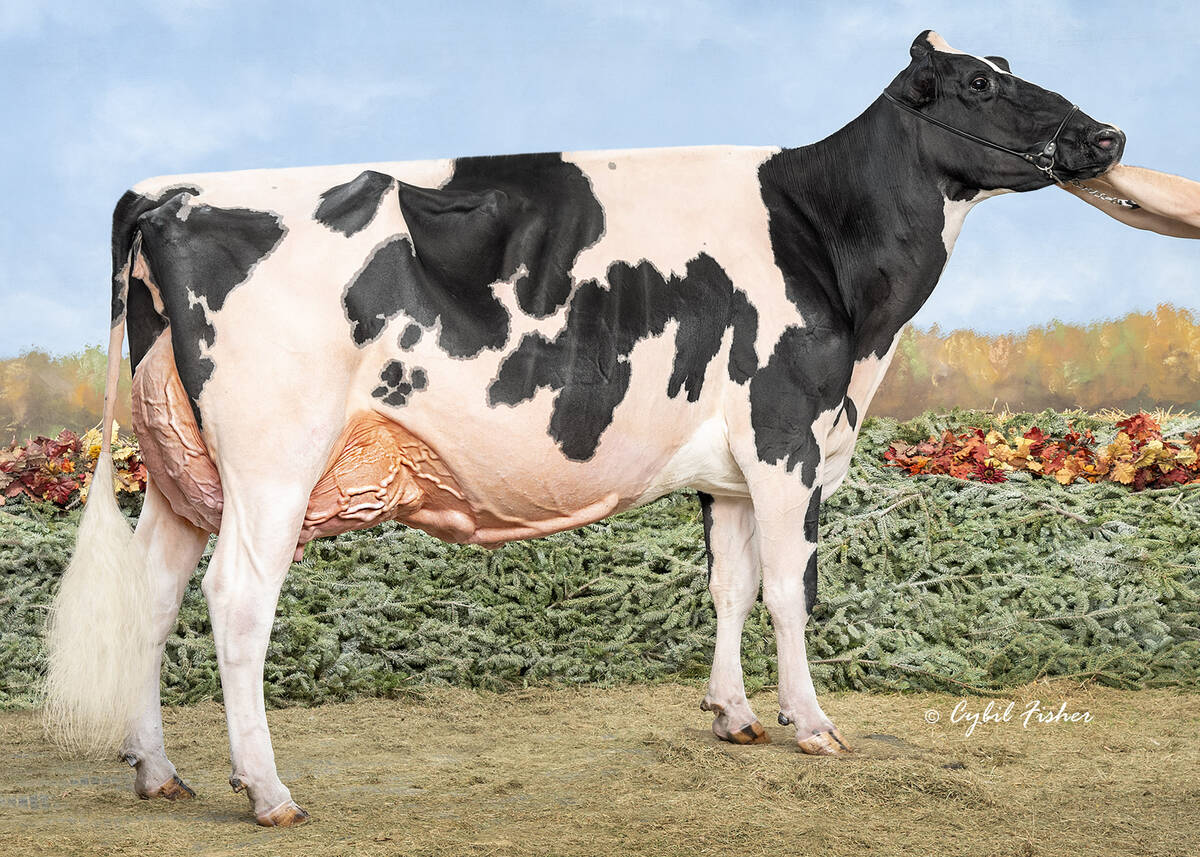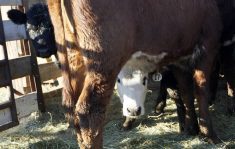RED DEER, Alta. – Sheep producers are seeing more scrapie problems this year with 10 flocks diagnosed with the disease in Canada.
Scrapie is a brain-wasting disease monitored by the sheep industry and Agriculture Canada under the umbrella of the Canadian Food Inspection Agency. All incidents must be reported.
A few cases appear every year, but 1997 is the worst since 1993, said Ron Rogers, a veterinarian with the inspection agency. He spoke at the Alberta Sheep Symposium held here.
There were two cases in 1994 and nine cases in 1993. When the disease is confirmed, the entire flock is destroyed. All carcasses are incinerated.
Read Also

Saskatchewan dairy farm breeds international champion
A Saskatchewan bred cow made history at the 2025 World Dairy Expo in Madison, Wisconsin, when she was named grand champion in the five-year-old Holstein class.
Owners are paid $300 for purebreds and $150 for grade animals that are killed. So far this year, the government has paid $500,000 for 5,000 sheep.
The government is considering more compensation, said Rogers.
People have known about this brain-wasting condition in sheep for about 250 years. It is part of the family of transmissible spongiform encephalopathies, found in numerous species of mammals.
“Scrapie is one of the most recognized of these diseases for many, many years.”
Other forms of the condition are chronic wasting disease of deer and elk.
This condition was diagnosed in a Saskatchewan elk herd in 1996. The herd was destroyed after an animal imported from the United States tested positive for the disease.
Another form is feline spongiform encephalopathy which affects domestic cats and big cats in zoos.
Scrapie is also thought to be responsible for the cattle version, bovine spongiform encephalopathy or mad cow disease. That disease affected more than 170,000 cattle in the United Kingdom and is thought to be caused by feeding protein supplements derived from rendered sheep parts infected with scrapie.
“The main source of this epidemic that we all agree on has been contaminated feed, particularly contaminated meat and bone meal,” Rogers said.
Canada and the United States banned the feeding of protein supplements derived from ruminants back to ruminants.
The BSE epidemic nearly ruined the British beef industry when the United Nation’s World Health Organization said a new strain of Creutzfeldt-Jakob disease is possibly linked to eating contaminated beef.
About 20 people have died from the new strain of Creutzfeldt-Jakob disease, he said.
Canada had one case of BSE in an imported Salers cow at a Red Deer farm in 1993. The entire herd of purebred cattle was destroyed.
Rogers said although many blame scrapie for the BSE outbreak in cattle it could be a naturally occurring disease or be linked to some other source of infection.
There are seven strains of scrapie and Canada appears to have strains A and C.
An eradication program is almost impossible because a live animal is needed for the test, but the only diagnostic test is a brain tissue sample. As well, before a vaccine is developed, scientists must confirm what causes scrapie.
Vary in age
Clinical scrapie has been reported in animals as young as 10 months and as old as 11 years. The average age of an infected sheep is two to five years.
Sheep may exhibit symptoms similar to scrapie if they have heavy infestations of lice or mites, photosensitization, pregnancy toxemia, the viral disease maeda visna, tumors or poisoning. It appears in all breeds of sheep in Canada.
Symptoms are a change in behavior where animals appear angry and aggressive, sensory problems, open sores on flanks where animals have bitten themselves, gait abnormalities which include high stepping, loss of balance or stumbling.
The disease can incubate for a long time. It is not inherited and can be spread orally when animals come in contact with infected placentas or afterbirth.















